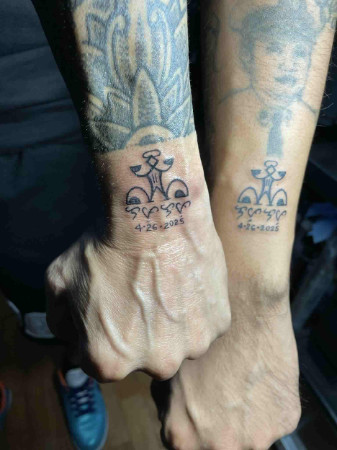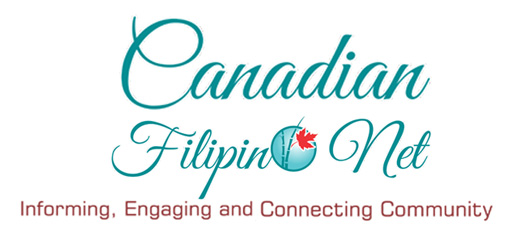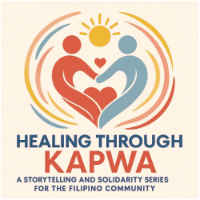November 16, 2025 — Days after the Lapu-Lapu Day tragedy, a powerful memorial began to take shape. Handwritten notes soon appeared on the fence; scrawled on notepads, scraps of paper, even napkins. Each message conveyed raw feelings of grief, hope, confusion, and love. Flowers and candles lined the sidewalk. Stuffed toys were left behind. A spontaneous memorial drew the community into collective mourning.
“Spontaneous memorials are powerful because they embody one of our deepest human needs: connection,” social worker and therapist Eliane Nevares, MSW, RSW, explained. After trauma, grief often feels isolating, but gathering in a shared space offers comfort and a reminder that “we are not carrying the weight of loss alone.”
Among those deeply affected was Mayo Landicho, a musician who performed at the cultural festival just before the incident. He opened the show alongside hip hop artists Swiggle, Talilo, Jacob, and Missy.Filipino American founding member of the Black Eyed Peas, Apl.de Ap, along with J. Rey Soul, performed at the event.
When the performance ended, Mayo began packing up his equipment while his fourteen-year-old son, Mason, went with his sister’s boyfriend to get food from a nearby food truck. As Mayo loaded his car, someone informed him of the tragedy unfolding nearby. His first thought was of Mason. In a panic, he dialled his son’s cellphone until he saw him, safe but upset. Mason explained that they had left the area just four minutes earlier, frustrated by the long line for food.
But Mayo’s relief was soon replaced by grief. His goddaughter was among those killed. “I watched her grow up. She sang, she played the guitar,” he recalled, his voice heavy. At fifteen, she had asked him for her first tattoo. It was a small bird on her arm.
Following her funeral, Mayo gathered her immediate family and a few close friends at his tattoo studio on Main Street. He closed the shop for the day and transformed it into a private memorial space. As her favourite music filled the room, Mayo tattooed each of the nine family members. “It was for her beautiful soul, forever etched on their bodies,” he said. For him, it was both a tribute and a therapy: honouring his goddaughter and his way of beginning to heal.

Enata commemorative tattoo by Mayo Landicho
Healing took many forms within the community. My niece, Cecilia Federizon, her husband, and three friends were present at the event when the tragedy unfolded. “We ran for our lives … I almost died,” she recalled. They escaped without physical injuries, but the psychological toll was heavy. Their group chat became a lifeline. They checked in constantly, shared their emotions, and reminded one another they didn’t have to carry the burden alone.
Cecilia realized that even when people shared the same traumatic event, their grief and healing followed different paths. “Even though we experience it together, we all had different reactions and we’re all processing it differently,” she said. Past traumas, she reflected, also influenced how each of them coped with this near-death experience.
She was touched when friends, including some she hadn’t spoken to in years, reached out to ask if she was okay. Their kindness reminded her she wasn’t alone. Seeking further healing, she joined a writing circle hosted by NPC3 (National Pilipino Canadian Cultural Centre) called “Healing Through Writing,” facilitated by Karla Comanda.
Therapist Eliane highlighted the power of such practices: “After a devastating public tragedy, the mind can feel scattered and overwhelmed. Putting pen to paper helps organize thoughts and emotions, creating a safe space where fear, sadness, anger, and confusion can be expressed without judgment. It’s a first step from paralysis towards movement and agency.”
Cecilia also participated in a six-week Healing Circle called “Yakap,” offered by Tahanan Studio and Mango Mental Health. These gatherings reminded her that healing often occurs within community, through stories, silence, and shared presence.
Later, in therapy, Cecilia was diagnosed with Post-Traumatic Stress Disorder (PTSD). One approach that has helped her is EMDR (Eye Movement Desensitization and Reprocessing), which links her present struggles to past experiences and future healing. As Eliane noted, “What EMDR is helpful for is moving people from a place of feeling stuck or haunted by that experience to regaining a sense of agency, and ultimately, feeling unstuck.”
For Cecilia, healing also took a symbolic form. At a community event at Tahanan Studio, she and two friends from the Lapu-Lapu event attended a free pop-up tattoo by Pifa. Two of them chose to be tattooed with the word kapwa in Baybayin, the ancient Filipino script. To them, it represented unity. Cecilia described it as a “sacred interconnectedness not only within the Filipino community but with all human beings.”
The temporary memorial on Fraser Street also moved her. Among the many flowers, candles, and letters, one gesture stood out: a bouquet placed by members of the Sikh community. “That touched me,” she said, seeing how solidarity extended beyond cultural lines.
It echoed Mayo’s reflection when he visited the site: “I saw the whole community come together … all races. Regardless of skin colour, everyone came wanting to help genuinely.” He continues to use his music and art at fundraising events across the Lower Mainland to support victims and families.
Mayo created a commemorative tattoo for Lapu-Lapu called Enata. The design depicts a human figure with the number “11” at its centre and a halo above its head, honouring the eleven victims. “They were heroes and our guardian angels as they saved many lives so others could live,” Mayo said.
Hip-hop artist Swiggle from Portland returned to Vancouver in late September, five months after the tragedy. The incident left him shaken during what had been his first performance in Canada. He wrote a song about Lapu-Lapu, while Mayo also composed one, which he first played instrumentally at Art Heals. Reconnecting, the two artists found their timing aligned. They recorded a rap version together and are planning an extended release featuring other Vancouver musicians.
During his visit, Swiggle also got the Enata tattoo from Mayo, who had already inked it on himself. Together, they began filming scenes for the music video at the memorial, transforming grief into art and a lasting tribute.
The large temporary memorial at Fraser Street and East 43rd Avenue has been moved before school resumed at John Oliver Secondary. A semi-permanent memorial now sits at Mountain View Cemetery, providing a peaceful place for families and community members to return and honour those they have lost.
Memorials, whether temporary or lasting, give shape to collective grief. As Eliane noted, “Because the tragedy touched people both within and beyond the Filipino community, the memorial also became a bridge—a space where cultural lines soften, and we reconnect with our shared humanity. In honouring loss together, we’re reminded that while grief is deeply personal, it is also universally human.”




 About the author
About the author





